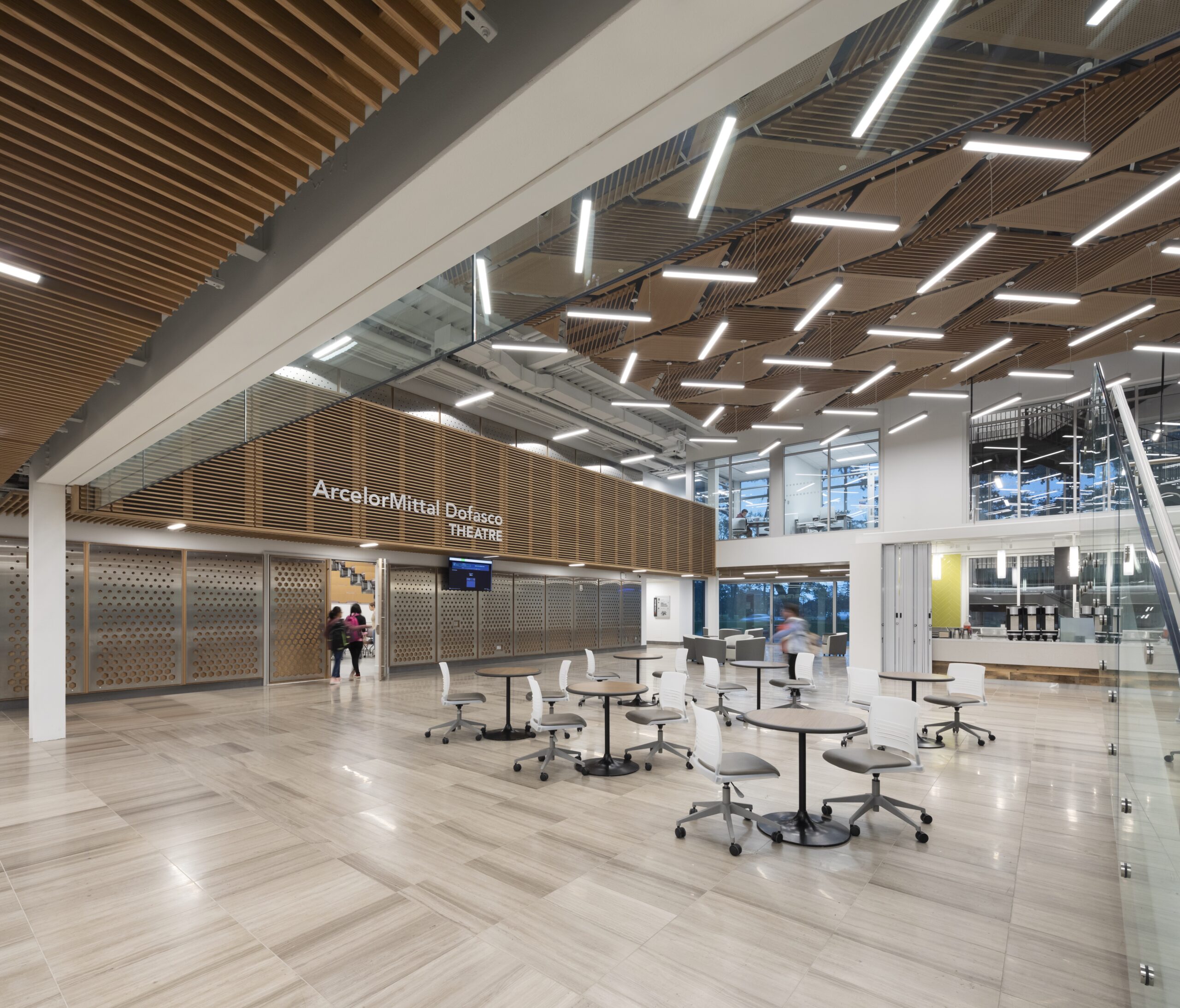The Joyce Centre for Partnership & Innovation represented an example of a transformational design executed through a highly integrated design process.
Success for Mohawk College included a number of complex and exciting outcomes. With SIF funding, the first driver was schedule resulting in a fast tracked time line to meet specific deadlines associated with the funding. Equally important, Mohawk won the competitive funding by defining a strong vision — using this investment to create a net zero institutional facility, the first-of-its-kind in Canada. These were both important factors which dictated the design strategy, team and design process.
Ultimately, our integrated team developed a strategy that drew on the strengths, creativity and innovation of a number of design partners, subject matter experts and a hands-on team in the construction process.
While there were critical technical challenges in developing the design, the primary design success criteria for The Joyce Centre was to create an interactive, student-centered space that exemplified a hands-on learning approach and reflected the way in which educational institutions are challenging traditional pedagogical thought.
Mohawk and its stakeholders were a central part of the design team from the outset and their continued involvement was an important part of the success of the design. Having set this ambitious vision for the facility, we worked closely with Mohawk’s management, project managers and stakeholders to:
1. Define the programme
This programme was integrated with the development of the energy budget for the project. The energy budget is an innovative new tool which became an essential methodology in achieving our Net Zero outcomes. By understanding the programme, we were able to project energy loads, which in turn enabled a thorough analysis of the means and methods available to produce an equal amount of energy, as well as their financial implications. The solution developed from this analysis drove the rest of our design decisions for the facility. At the same time, we were careful to ensure programme space that was flexible and could adapt, not only as the design evolved but also as the facility expands for years to come, delivering a future ready solution.
2. Enable its cultural shift
A net zero outcome is not just reliant on the design and performance of the building, but contingent on an essential cultural shift — taking personal responsibility for our energy footprint. Working closely with the stakeholders, we made sure to understand their desired pedagogical shifts on campus and how we would integrate these shifts into the design and culture of the space at a fundamental level. It meant that our team identified and made the most of interactive opportunities such as the rooftop photo voltaic lab and live energy usage dashboards in the atrium — two examples which reinforce the hands-on nature of the building and cultural implications in measurable ways.
3. To tell the story
We understood that one of Mohawk’s objectives was to set a precedent and leave a legacy of sustainability on its campus. Working hand-in-hand with Mohawk and its public relations team, and with a team of our own PR, B+H and mcCallumSather supported Mohawk as it managed the message of the project from the outset, specifically through involvement in the CaGBC pilot programs, World Green Building Council, and local organizations such as Sustainable Hamilton Burlington.
Overcoming technical challenges throughout the design required strong communication, trust and problem solving. In the absence of ego, this collaborative group came together with the singular objective of delivering an exceptional transformational environment for Mohawk. This translated into a process that respected and drew on the strengths of those around the table. B+H, mcCallumSather as architects, RDH energy and building Science, TMP mechanical, MBII electrical and Mantecon Partners structural with the team and sub trades from Ellis Don, worked together to develop solutions.
The project achieved Net Zero Certification, the first-of-a-kind result for an Institution in Canada and largest project to be certified, achieving our client’s objective and doing it in such a way that both facilitates and enables the power or partnership and innovation.
The project continues to be a feature of tours, articles and presentations. Watch for more detail on the project as it becomes available, including more on both the technical and cultural aspects of shaping our net zero future.
Read more about The Joyce Centre For Partnership and Innovation







